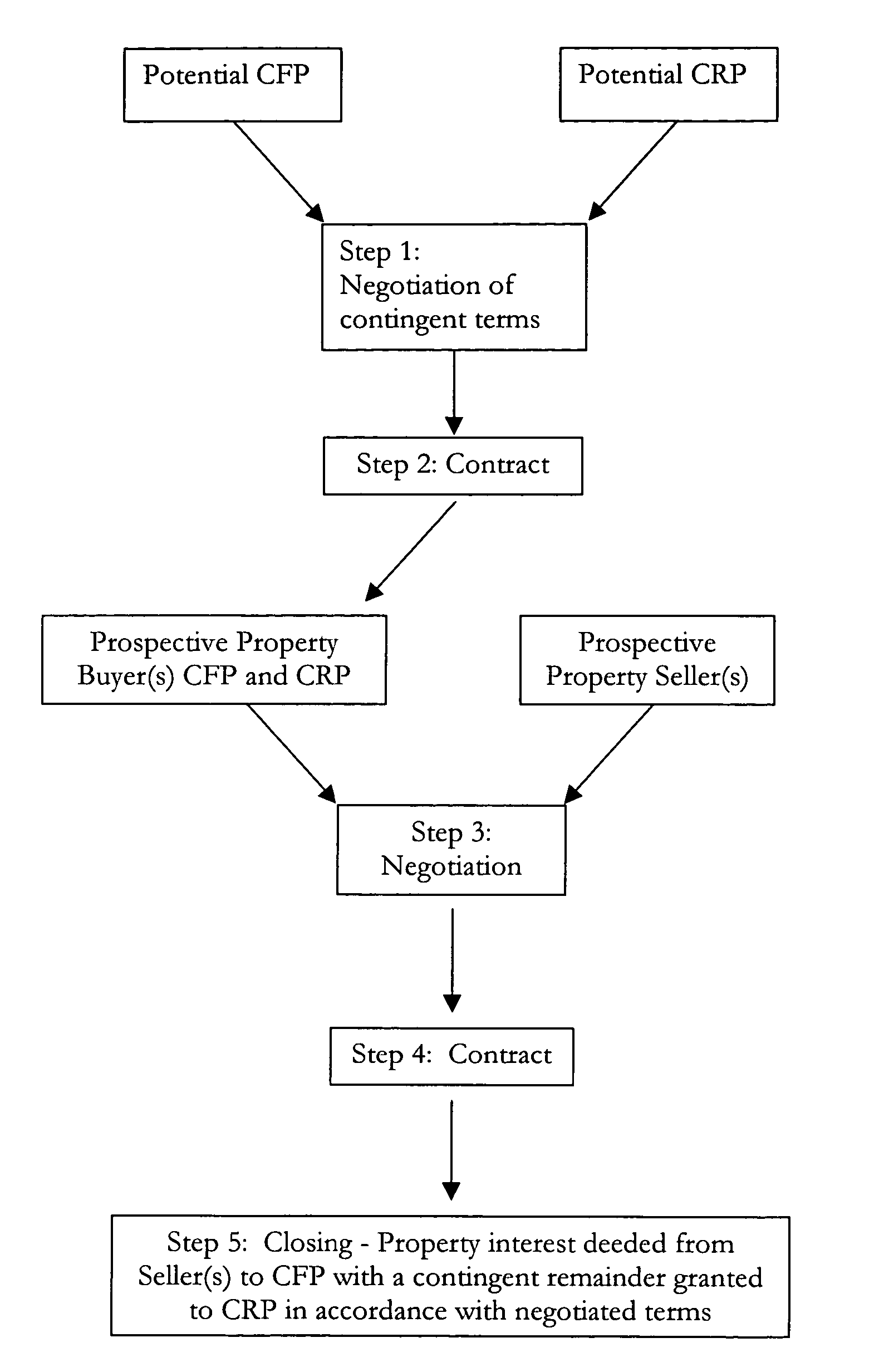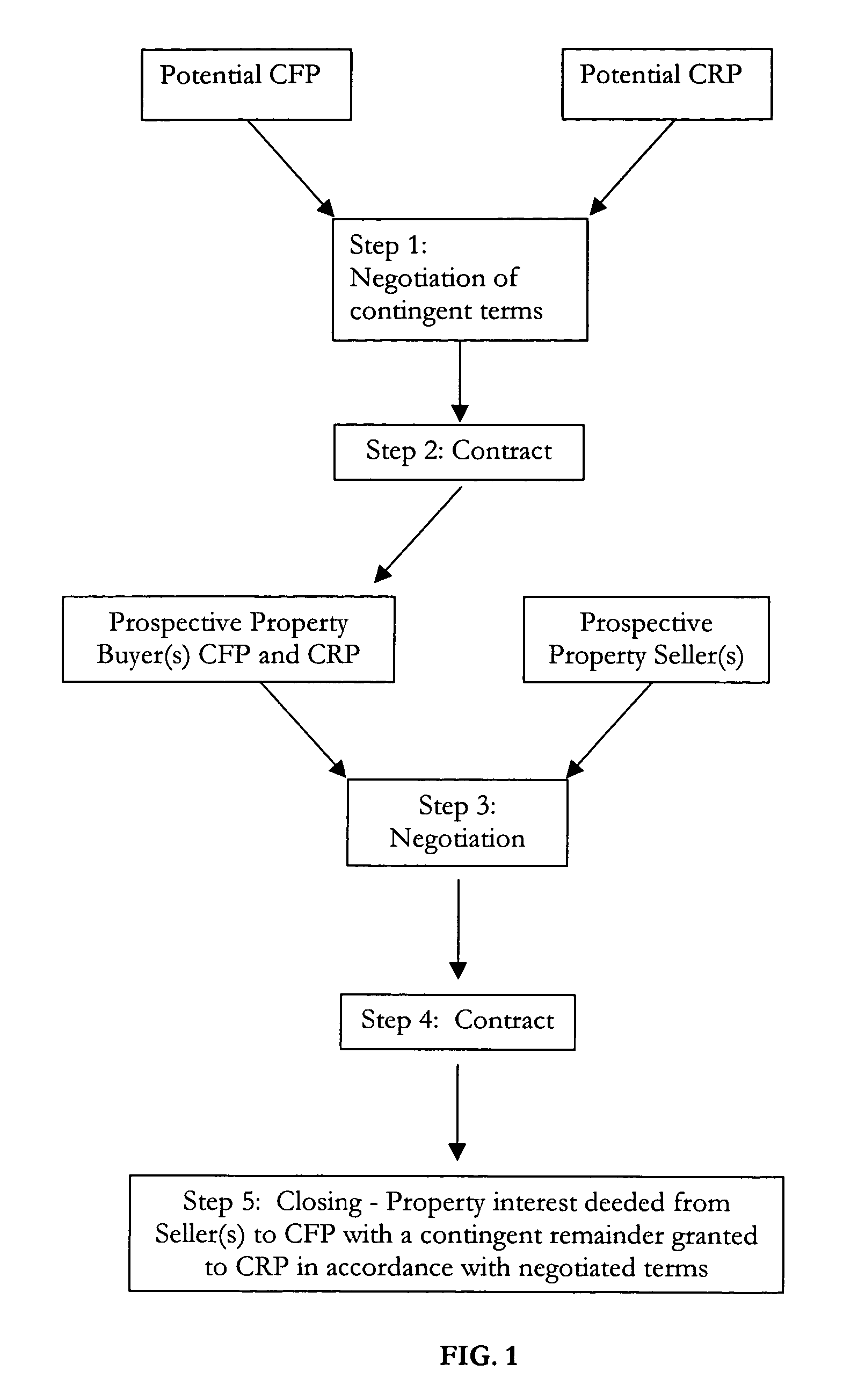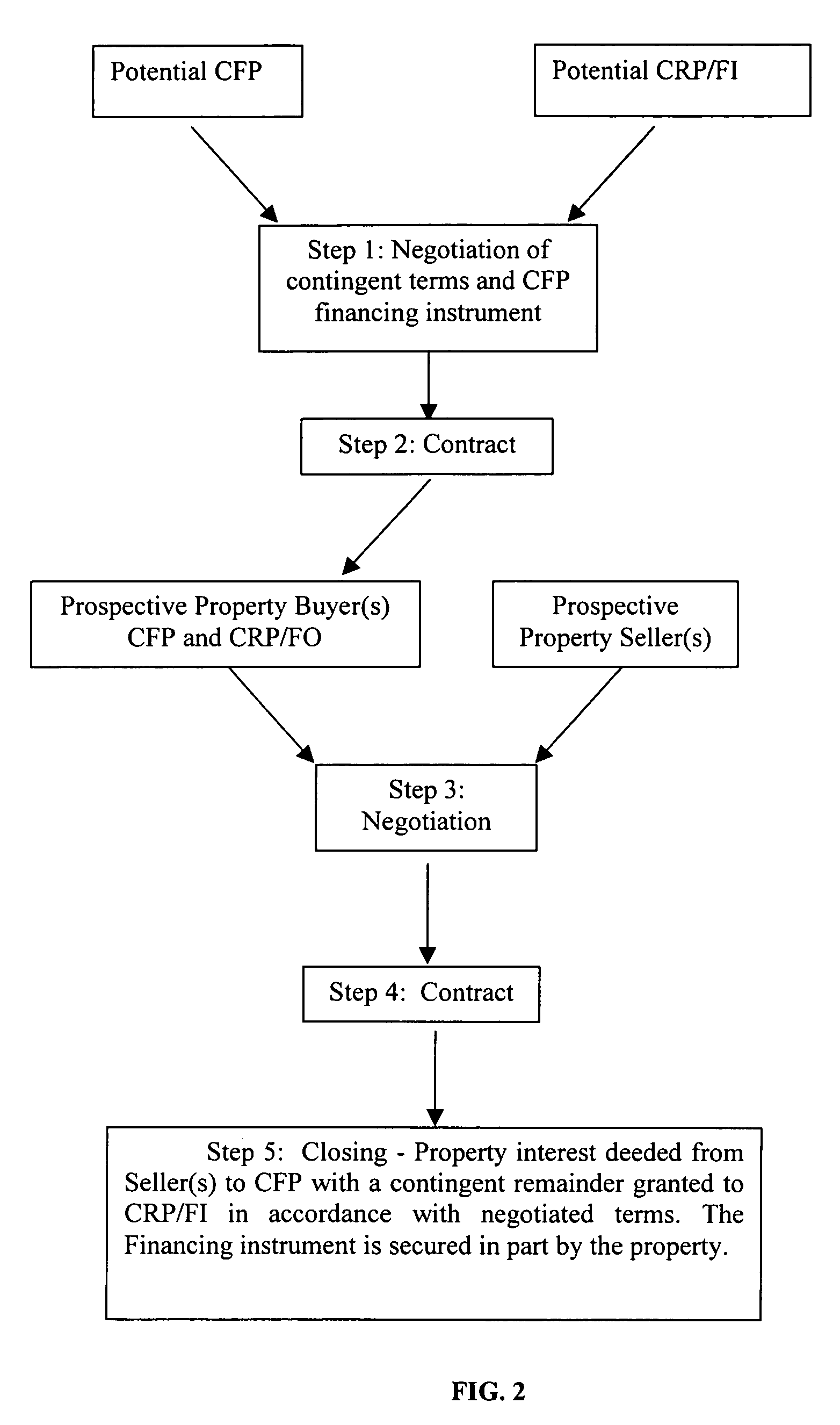Conditional fee ownership home financing system and business method
a home financing and conditional fee technology, applied in finance, instruments, data processing applications, etc., can solve the problems of large segment of the population deprived of the advantages of home ownership, large portion of the population is deprived of home ownership advantages, and home ownership has traditionally been limited, so as to reduce the risk of future default, and avoid the cost of foreclosure
- Summary
- Abstract
- Description
- Claims
- Application Information
AI Technical Summary
Benefits of technology
Problems solved by technology
Method used
Image
Examples
example 1
[0099]Potential Homeowner / Conditional Fee Purchaser (CFP) wishes to purchase a newly constructed customized home from seller for $100,000. CFP is unable to purchase the home because of the closing cost and down payment requirements. CFP contact third party / conditional remainder purchaser (CRP) a company utilizing CoFOHFS to purchase contingent remainder interests in real property. CFP wants to enter into a conditional fee financing arrangement. CRP negotiates with CFP and they mutually agree to the following terms:[0100]1. A determination date five-years from the date the sale closes.[0101]2. CFP agreeing to pay CRP on the determination date the greater of[0102](a) $110,000 or[0103](b) $10,000 less than the appraised value of the property at the end of the five-year determination period.[0104]3. CFP paying to seller $35,000 (Financed through a financial institution for a length of time no greater than the length of time for the determination date, in this case 5 years).[0105]4. CRP ...
example 2
[0117]Detailed below is an example of refinancing in accordance with the CoFOHFS method described herein.
[0118]This Example is based on the initial assumption that in year 1, a property was purchased for $125,000. Buyers (B) put down 3% or $3,750 and financed the balance at a 7.5% interest rate. This resulted in a monthly payment of principal and interest (P&I) of $848. The Principal, Interest, Tax and Insurance (PITI) for the property (including $35 hazard insurance, $125 property tax payment and $97 mortgage insurance payment) was $1,105.
[0119]As a result of a hardship in year 2, B could no longer make the PITI payment of $1,105. The property is in jeopardy of foreclosure, as B has become delinquent in his payments.
[0120]To avoid foreclosure, B will refinance using the CoFOHFS method. B obtains an appraisal of the property. The FMV of the real property is $130,000. B enters into a conditional fee agreement with the investor, here the investor is also the lender. In this example, B...
PUM
 Login to View More
Login to View More Abstract
Description
Claims
Application Information
 Login to View More
Login to View More - R&D
- Intellectual Property
- Life Sciences
- Materials
- Tech Scout
- Unparalleled Data Quality
- Higher Quality Content
- 60% Fewer Hallucinations
Browse by: Latest US Patents, China's latest patents, Technical Efficacy Thesaurus, Application Domain, Technology Topic, Popular Technical Reports.
© 2025 PatSnap. All rights reserved.Legal|Privacy policy|Modern Slavery Act Transparency Statement|Sitemap|About US| Contact US: help@patsnap.com



